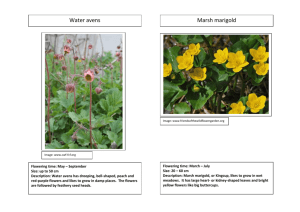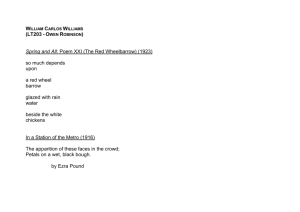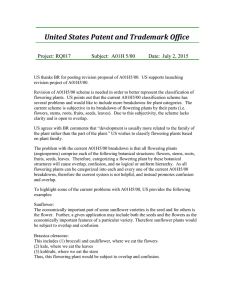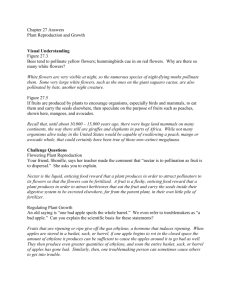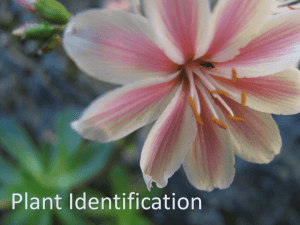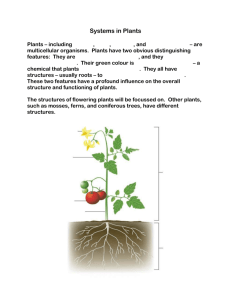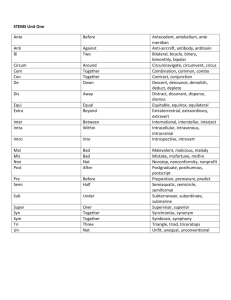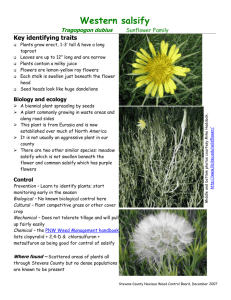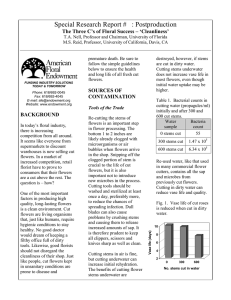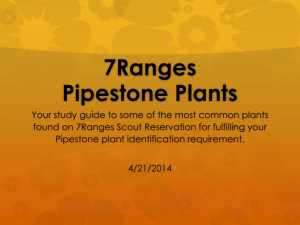Information Sheet Giant Hog Weed DESCRIPTION Stems: Flowering
advertisement
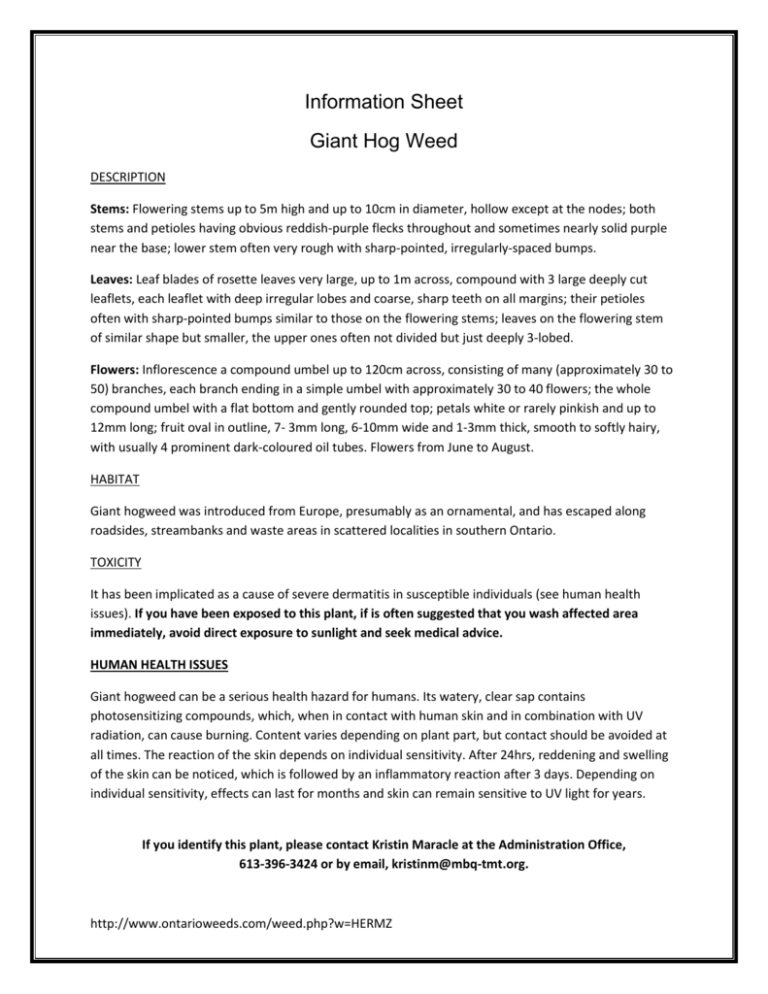
Information Sheet Giant Hog Weed DESCRIPTION Stems: Flowering stems up to 5m high and up to 10cm in diameter, hollow except at the nodes; both stems and petioles having obvious reddish-purple flecks throughout and sometimes nearly solid purple near the base; lower stem often very rough with sharp-pointed, irregularly-spaced bumps. Leaves: Leaf blades of rosette leaves very large, up to 1m across, compound with 3 large deeply cut leaflets, each leaflet with deep irregular lobes and coarse, sharp teeth on all margins; their petioles often with sharp-pointed bumps similar to those on the flowering stems; leaves on the flowering stem of similar shape but smaller, the upper ones often not divided but just deeply 3-lobed. Flowers: Inflorescence a compound umbel up to 120cm across, consisting of many (approximately 30 to 50) branches, each branch ending in a simple umbel with approximately 30 to 40 flowers; the whole compound umbel with a flat bottom and gently rounded top; petals white or rarely pinkish and up to 12mm long; fruit oval in outline, 7- 3mm long, 6-10mm wide and 1-3mm thick, smooth to softly hairy, with usually 4 prominent dark-coloured oil tubes. Flowers from June to August. HABITAT Giant hogweed was introduced from Europe, presumably as an ornamental, and has escaped along roadsides, streambanks and waste areas in scattered localities in southern Ontario. TOXICITY It has been implicated as a cause of severe dermatitis in susceptible individuals (see human health issues). If you have been exposed to this plant, if is often suggested that you wash affected area immediately, avoid direct exposure to sunlight and seek medical advice. HUMAN HEALTH ISSUES Giant hogweed can be a serious health hazard for humans. Its watery, clear sap contains photosensitizing compounds, which, when in contact with human skin and in combination with UV radiation, can cause burning. Content varies depending on plant part, but contact should be avoided at all times. The reaction of the skin depends on individual sensitivity. After 24hrs, reddening and swelling of the skin can be noticed, which is followed by an inflammatory reaction after 3 days. Depending on individual sensitivity, effects can last for months and skin can remain sensitive to UV light for years. If you identify this plant, please contact Kristin Maracle at the Administration Office, 613-396-3424 or by email, kristinm@mbq-tmt.org. http://www.ontarioweeds.com/weed.php?w=HERMZ PHOTOS Reddish-Purple Flecks on Stem Underside of Leaf http://www.ontarioweeds.com/weed.php?w=HERMZ Flowers Watery, Clear Sap

